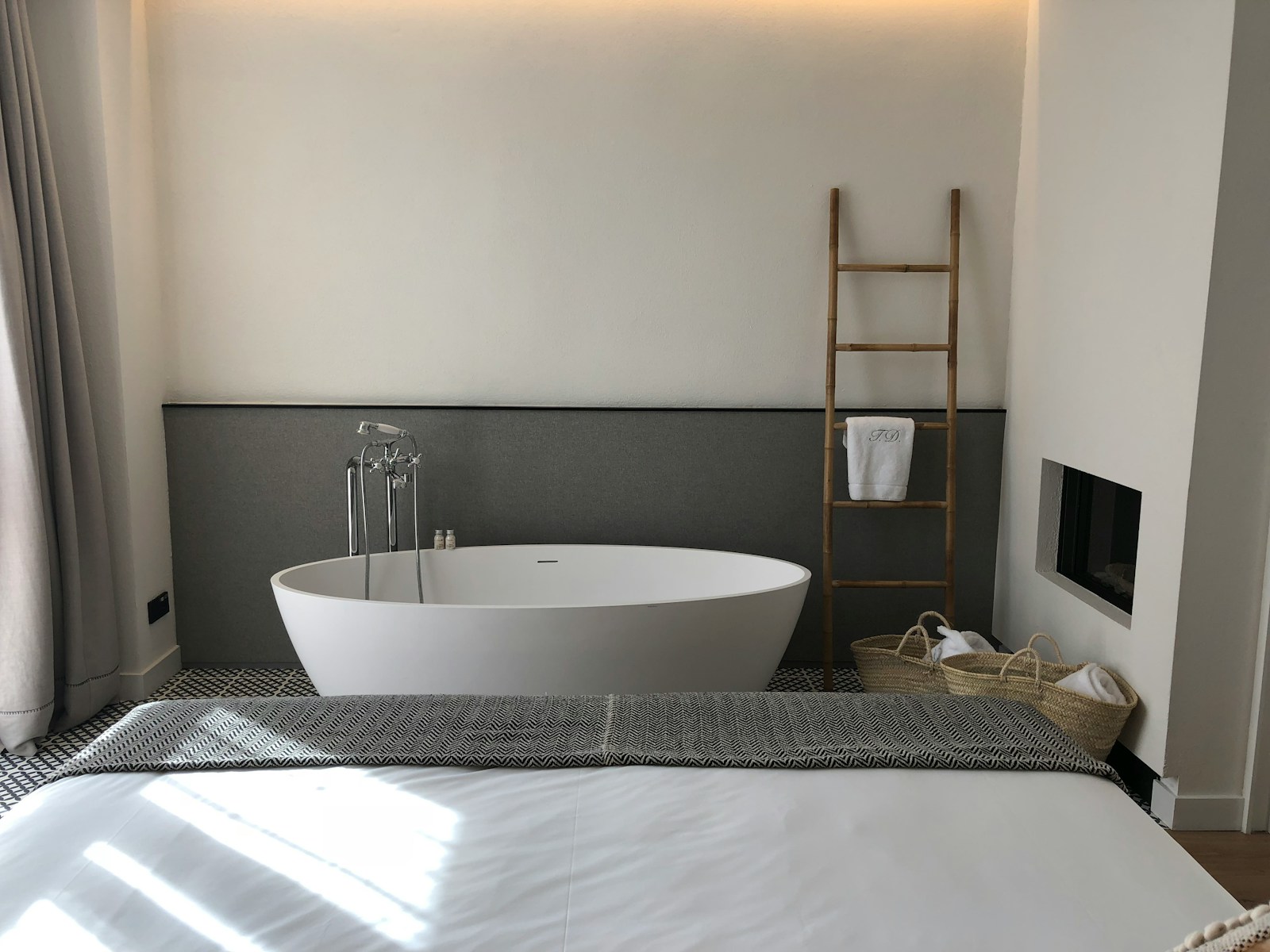A minimalist bathroom isn’t just about stripping away excess; it’s about creating a space that’s functional, serene, and thoughtfully designed. In a world full of distractions, the bathroom can become a sanctuary for calm—a place where simplicity meets elegance. With clean lines, neutral tones, and carefully selected materials, a minimalist bathroom can transform your daily routines into moments of peace and clarity.
The Foundation of Minimalism: Functionality First
In minimalist design, every element serves a purpose. The goal is to eliminate anything unnecessary, focusing instead on functionality and practicality. In a bathroom, this might mean limiting clutter on countertops, using built-in storage, and selecting fixtures that are both sleek and efficient. Wall-mounted vanities, for example, keep the floor space clear, making the room feel larger and more open.
Cabinets and shelves should be designed to hide away personal items like toiletries, towels, and cleaning products, leaving surfaces bare and free from visual distractions. The less clutter there is, the easier it is to maintain a sense of order and calm, making your bathroom a more relaxing space to spend time in.
Neutral Colors and Natural Materials
Minimalist bathroom design often relies on a palette of neutral tones—white, grey, beige, and soft earth tones that promote a clean, calm environment. These colors make the space feel open and airy, while also emphasizing the purity of the design. By choosing neutral colors, you allow the bathroom’s lines, textures, and materials to stand out without overwhelming the senses.
Natural materials, like stone, wood, or polished concrete, can add warmth and texture to a minimalist bathroom. Think of a beautiful wooden bench against a backdrop of smooth white tiles, or a stone countertop paired with sleek, matte black fixtures. These materials not only elevate the design but also bring a sense of nature and tranquility into the space.
Clean Lines and Simple Fixtures
One of the hallmarks of minimalist design is the emphasis on clean, straight lines. This is particularly important in a bathroom, where symmetry and simplicity can make the space feel organized and well-thought-out. Floating vanities, frameless glass shower doors, and minimalistic faucets all contribute to a streamlined look that’s free from excess ornamentation.
Fixtures should be chosen for their simplicity and quality. Minimalist faucets, for example, often come in matte finishes like black or brushed metal, which add a modern touch without being overly showy. Even lighting can reflect minimalist principles, with recessed lights or simple pendant fixtures casting soft, even light without dominating the space.
Maximizing Space and Light
A key element of minimalist bathroom design is making the most of natural light. Large windows, skylights, or even strategically placed mirrors can reflect and amplify the light, making a small bathroom feel more expansive. If natural light is limited, consider soft LED lighting that mimics daylight, casting a gentle glow across the space. Lighting should be understated yet effective, contributing to the room’s overall sense of tranquility.
In smaller bathrooms, clever use of space is essential. Consider using wall-mounted fixtures, or even recessed shelves in the shower, to keep everything streamlined and off the floor. Opt for a glass shower screen instead of a bulky curtain or door to maintain a sense of openness. The goal is to create a space that feels as large and uncluttered as possible, even when working with limited square footage.
Mindful Décor
In minimalist bathrooms, décor is kept to a minimum. Every piece, whether functional or decorative, should contribute to the overall atmosphere of calm. Instead of filling the space with items, select a few high-quality pieces that speak to the simplicity and beauty of the design. A single plant in a sleek pot, a carefully placed candle, or a piece of abstract artwork can add character without disrupting the flow of the room.
Towels and accessories should be chosen for their clean lines and neutral tones. Stick to high-quality, textured fabrics in colors that complement the rest of the bathroom. By keeping accessories simple, you allow the room’s architecture and materials to take center stage.
Embracing the Minimalist Bathroom Lifestyle
Minimalist bathroom design isn’t just about aesthetics; it’s about embracing a lifestyle that values simplicity, functionality, and mindfulness. By removing distractions and focusing on the essentials, a minimalist bathroom can become a space where you start and end your day with clarity and calm. It’s a place where less truly becomes more, offering you a daily retreat from the busyness of life.
Creating a minimalist bathroom is an exercise in thoughtful design, but the end result is a space that enhances your daily routines, encourages relaxation, and promotes a sense of well-being. It’s about stripping away the unnecessary to make room for what truly matters: a peaceful, functional, and beautiful space where you can feel at ease.
